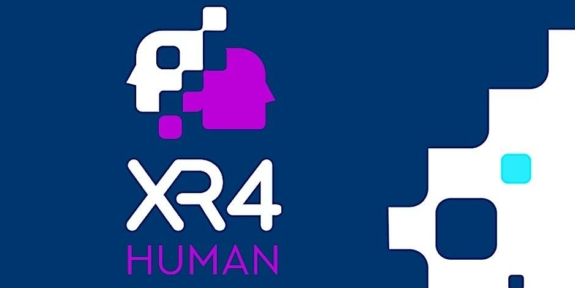Guidance or Governance: Reflections on the Role of Ethics in XR
How can a Code of Conduct support XR developers to establish a balance between ethical responsibility and creative freedom? Why is finding this balance so important and how do factors such as human-centred design, accessibility, and transparency come into play?
What is XR4Human and how are we involved at LLInC?
XR4Human is a three-year EU-funded project working to address the ethical, social, and technical challenges posed by the rapid development of XR (Extended Reality) technologies across Europe. Its mission is to co-create living guidance documents on ethical, policy, regulatory, governance, and interoperability issues in XR, while building public trust and acceptance and fostering a strong and competitive European XR ecosystem.
LLInC’s Marco Correa Pérez, Melissa Amorós Lark, and Ruhi Kanakia represent Leiden University in the XR4Human Consortium, which is currently developing a European Code of Conduct for the Human-Centred and Ethical Development of Immersive Technologies. The Code of Conduct sets out the ethical obligations for those involved in the design, development, and governance of immersive technologies, thereby helping ensure that these tools respect human rights, protect user privacy, promote inclusivity, and safeguard mental, physical, and social well-being across the XR ecosystem.


How can ethical guidance in XR support decision-making without being overly prescriptive?
This question guided the final session of XR4HUMAN’s public roundtable series, hosted on the 29th of April by Federico Anselmi, Project and Community Manager at XR4Europe AISBL. In conversation with Alina Kadlubsky and Melissa Amoros Lark from the LLInC team, we reflected on how the draft XR Code of Conduct can support those of us developing immersive technologies to act responsibly while maintaining creative freedom.

As a community engaged in the design, research, and deployment of XR, we understand that these technologies raise questions that go beyond functionality. XR applications have the power to shape human/social behaviour, perception, and identity. Answering such questions therefore demands not only technical skill but also ethical awareness. The Code of Conduct offers us a shared and dynamic ethical foundation, intended to guide decision-making across a variety of roles and contexts.
During the discussion, we highlighted the importance of human-centred design, emphasising the need to enable users to feel informed, safe, and empowered in immersive spaces. We spoke about the need for creating immersive environments that are accessible and inclusive for users as well as transparent about how they collect and use data. We also emphasised that ethical guidance should not be applied after the fact, but should shape the development process from the outset.
We discussed how the Code encourages reflection on issues such as digital identity, well-being, data governance, and the equitable distribution of risks and benefits. These principles are especially vital when designing for groups who may be marginalised or underrepresented in the development of XR technology itself. By addressing these considerations early in the design process, we aspire to realise more equitable, sustainable, and responsible outcomes.
The conversation also touched on the growing role of artificial intelligence in immersive environments. As AI-driven agents become increasingly present in XR experiences, questions arise around user awareness, consent, and emotional safety in these interactions. We reflected on how AI agents can influence human/users’ perception, behaviour, and trust regarding XR. What stood out in the discussion was the recognition that the Code of Conduct does not attempt to anticipate every specific technological advancement. Instead, it takes a value-based approach, offering guidance rooted in principles such as transparency, autonomy, and human dignity. This makes the Code adaptable and able to respond not only to today’s challenges, but also to emerging questions posed by evolving technologies such as AI.
This adaptability also speaks to the balance between guidance and governance. Rather than seeing them as opposites, the Code recognises the need to build both. Ethical guidance offers tools for reflection and decision-making, while governance ensures that values are consistently put into practice. Both approaches draw on lived experience and are therefore capable of responding to change.
With the XR4HUMAN roundtables now concluded, we encourage others to join us in shaping the future of the Code. The draft is open for public feedback through the QR code below and we welcome contributions from across disciplines and sectors. This is an opportunity to collectively define how immersive technologies can reflect the best of our values and responsibilities.
Resources
Read and comment on the draft of the XR Code of Conduct:
edu.nl/ddr3w
Watch the full roundtable discussion:
https://www.youtube.com/live/pCGBdmr82aQ?si=PM5TLLKfYY3HaS4M
Learn more about the XR4HUMAN project:
https://xr4human.eu
Join the community discussion:
https://forum.xr4human.eu
Read and provide feedback on XR4Human’s Code of Conduct via the QR code below!


